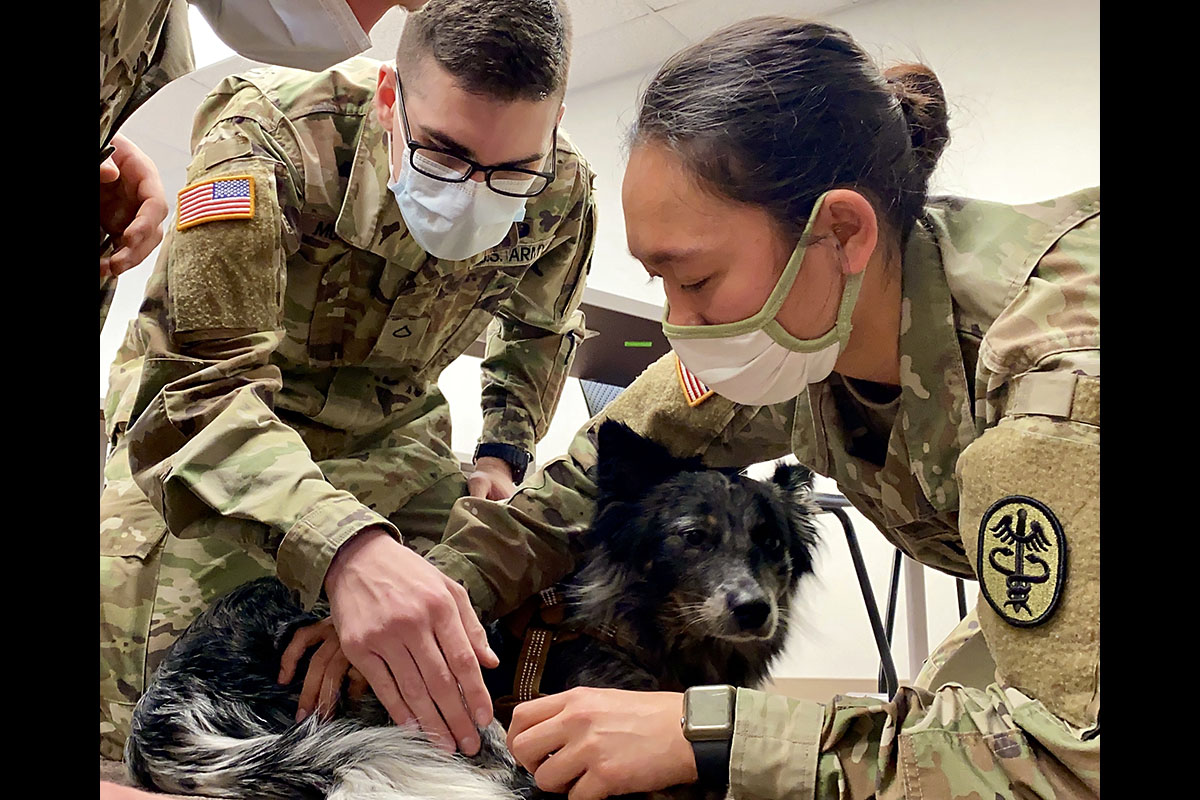U.S. Army Veterinarian Capt. Neda Othman from the Fort Campbell Veterinary Center, shows Pfc. Matthew Murphy, assigned to BACH’s department of emergency medicine, one method to find a pulse on a military working dog. BACH Soldiers recently participated in K9 Tactical Combat Casualty Care training which teaches non-veterinary first responders how to perform point-of-injury care to military working dogs in order to preserve life, limb or eyesight when a veterinarian or animal care specialist is not available. (U.S. Army photo by Maria Yager)
Home U.S. Army Veterinarian Capt. Neda Othman from the Fort Campbell Veterinary Center, shows Pfc. Matthew Murphy, assigned to BACH’s department of emergency medicine, one method to find a pulse on a military working dog. BACH Soldiers recently participated in K9 Tactical Combat Casualty Care training which teaches non-veterinary first responders how to perform point-of-injury care to military working dogs in order to preserve life, limb or eyesight when a veterinarian or animal care specialist is not available. (U.S. Army photo by Maria Yager) U.S. Army Veterinarian Capt. Neda Othman from the Fort Campbell Veterinary Center, shows Pfc. Matthew Murphy, assigned to BACH’s department of emergency medicine, one method to find a pulse on a military working dog. BACH Soldiers recently participated in K9 Tactical Combat Casualty Care training which teaches non-veterinary first responders how to perform point-of-injury care to military working dogs in order to preserve life, limb or eyesight when a veterinarian or animal care specialist is not available. (U.S. Army photo by Maria Yager)
U.S. Army Veterinarian Capt. Neda Othman from the Fort Campbell Veterinary Center, shows Pfc. Matthew Murphy, assigned to BACH’s department of emergency medicine, one method to find a pulse on a military working dog. BACH Soldiers recently participated in K9 Tactical Combat Casualty Care training which teaches non-veterinary first responders how to perform point-of-injury care to military working dogs in order to preserve life, limb or eyesight when a veterinarian or animal care specialist is not available. (U.S. Army photo by Maria Yager)


